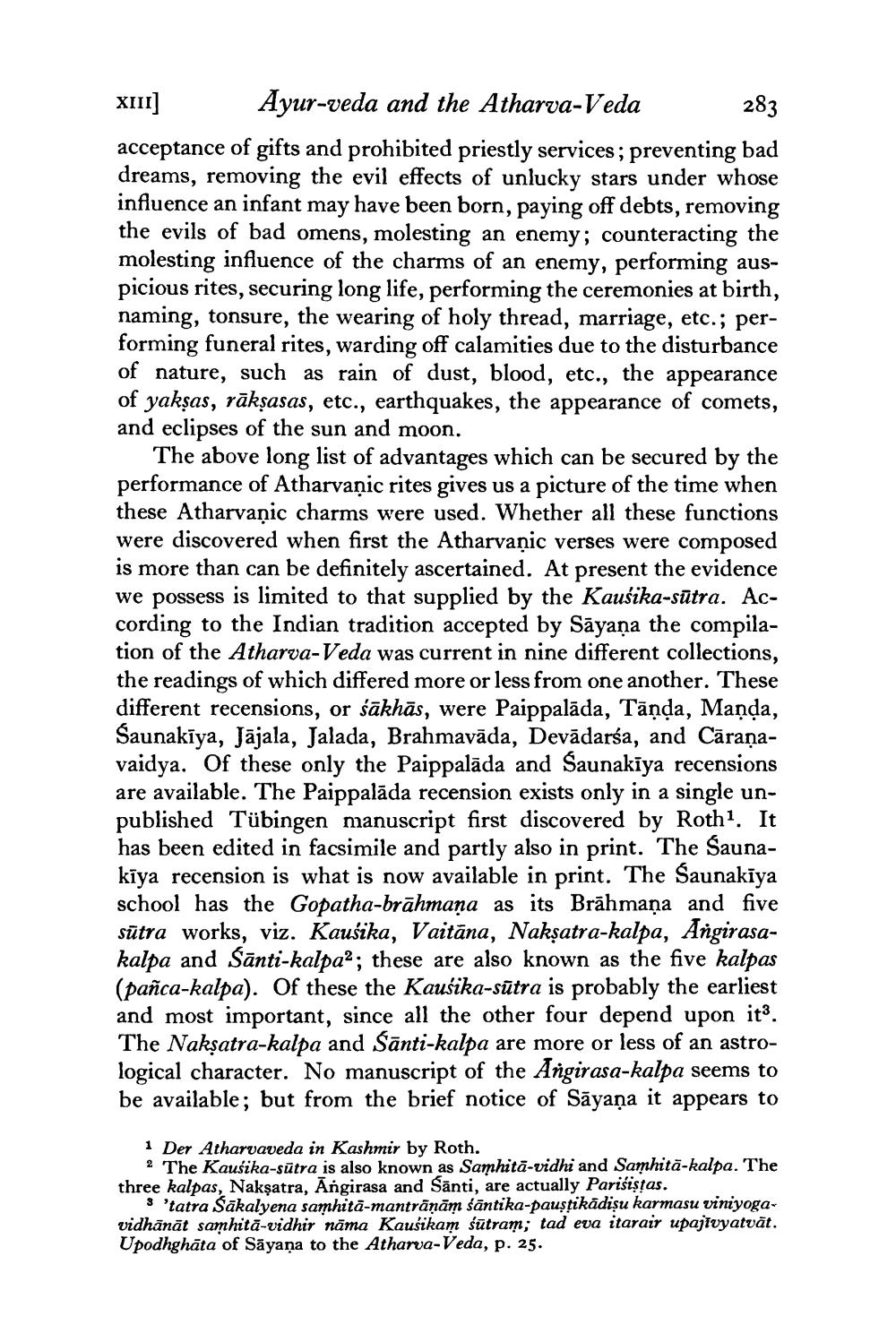________________
XIII]
Ayur-veda and the Atharva-Veda
283
acceptance of gifts and prohibited priestly services; preventing bad dreams, removing the evil effects of unlucky stars under whose influence an infant may have been born, paying off debts, removing the evils of bad omens, molesting an enemy; counteracting the molesting influence of the charms of an enemy, performing auspicious rites, securing long life, performing the ceremonies at birth, naming, tonsure, the wearing of holy thread, marriage, etc.; performing funeral rites, warding off calamities due to the disturbance of nature, such as rain of dust, blood, etc., the appearance of yakṣas, rākṣasas, etc., earthquakes, the appearance of comets, and eclipses of the sun and moon.
The above long list of advantages which can be secured by the performance of Atharvanic rites gives us a picture of the time when these Atharvanic charms were used. Whether all these functions were discovered when first the Atharvanic verses were composed is more than can be definitely ascertained. At present the evidence we possess is limited to that supplied by the Kausika-sutra. According to the Indian tradition accepted by Sāyaṇa the compilation of the Atharva-Veda was current in nine different collections, the readings of which differed more or less from one another. These different recensions, or śākhās, were Paippalāda, Tāṇḍa, Maṇḍa, Saunakīya, Jājala, Jalada, Brahmavāda, Devādarśa, and Cāraṇavaidya. Of these only the Paippalaāda and Saunakīya recensions are available. The Paippalāda recension exists only in a single unpublished Tübingen manuscript first discovered by Roth1. It has been edited in facsimile and partly also in print. The Saunakīya recension is what is now available in print. The Saunakiya school has the Gopatha-brāhmaṇa as its Brāhmaṇa and five sūtra works, viz. Kausika, Vaitāna, Nakṣatra-kalpa, Angirasakalpa and Santi-kalpa2; these are also known as the five kalpas (pañca-kalpa). Of these the Kausika-sūtra is probably the earliest and most important, since all the other four depend upon it3. The Nakṣatra-kalpa and Sānti-kalpa are more or less of an astrological character. No manuscript of the Angirasa-kalpa seems to be available; but from the brief notice of Sāyaṇa it appears to
1 Der Atharvaveda in Kashmir by Roth.
2 The Kausika-sutra is also known as Samhita-vidhi and Samhita-kalpa. The three kalpas, Nakṣatra, Angirasa and Santi, are actually Parisistas.
3 'tatra Sakalyena samhita-manträṇām sāntika-pauṣṭikādiṣu karmasu viniyogavidhānāt samhita-vidhir nāma Kausikam sutram; tad eva itarair upajivyatvāt. Upodhghata of Sayana to the Atharva-Veda, p. 25.




